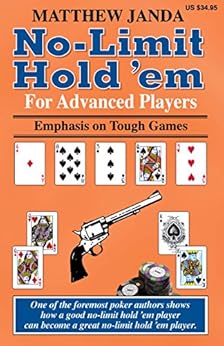No Limit Hold’em Rules and Basic Strategy
Rules of the Game
No Limit Hold’em (NLHE) is described as the Cadillac of Poker and it is indeed the most popular game in the world by a large amount and nothing will probably ever change that.
Even if mixed games are your passion and specialty, this game cannot be ignored for a variety of reasons. It is included in the Eight Game Mix which is a very popular mix in both tournaments and cash games. And big field NLHE often a part of major tournament series a low buy in and a high guarantee offer tremendous value even if it is not your specialty.
Basic Strategy
This site will not try and offer advice on how to beat $25/$50 six handed cash games or attempt to prepare you for High Roller events; that is out of our scope. But we will try and offer a few tips on how to navigate the NLHE round when included in mixed games.
The most important piece of advice is to be completely honest in regards to your relative NLHE skill level amongst the other players particularly in mixed game tournaments. If your NLHE game is weaker relative to the other games it would be a big mistake to play large pots against more skilled players when your edge in the other games is great.
If you ascertain you are at a disadvantage it is fine to adhere to a small ball strategy and also defend your big blind less even in when a defense is considered standard. It would also be acceptable to put in larger bets or raises to end a hand sooner rather than later. This last piece of advice is often frowned upon because it more or less ends the hand and often allows your opponent to only continue when you are beat. However, you can also play your big hands in a similar fashion and the odds are typically with you that they do not have you beat. Of course if your opponents are folding a lot this means you can also find bluffs, preferably with a blocker.
For example, suppose it is the NLHE round in a WSOP $1500 Eight Game tournament. You have AQ off suit in the small blind and are facing an open-raise from the button. An advanced NLHE player if they chose to re-raise would probably size it as such to get value by keeping dominated hands such as KQ, QJ, and lesser hands in their opponent’s range. However, if NLHE is not your game and you do not want to play a lot of big pots out-of-position you can either choose to just flat call or make a larger raise that will simply end the pot the vast majority of the time when stacks are not that deep. Note that you could also make this raise with AA or even as a bluff if stack sizes dictate that your opponent is not really in a position to just call your raise. It would not be completely wasting the value of AQ because it is conceivable you will get called by dominated hands anyway and your hand helps block AA, AK, AQ, and QQ.
Making larger than standard re-raises pre-flop will often get your opponent to fold and when he does you more than pay for the round of blinds and antes and move onto the next game. But also allows your opponent to make a big mistake by folding the best hand or getting it all in against one of your premium holdings.
Further Learning
No Limit Hold’em for Advanced Players by Matt Janda, (Rating 10/10) – This book is an outstanding resource on the game of NLHE and the principles covered will also make you a better player in any big bet variant.
No Limit Hold’em Theory and Practice by David Sklansky and Ed Miller, (Rating 10/10) – Another great book that can help you in any big bet game and it also provides some great insight on how to handle some NLHE tournament specific situations such as a calling range versus a short stack or with what hands you need to push when you hold a short stack.


